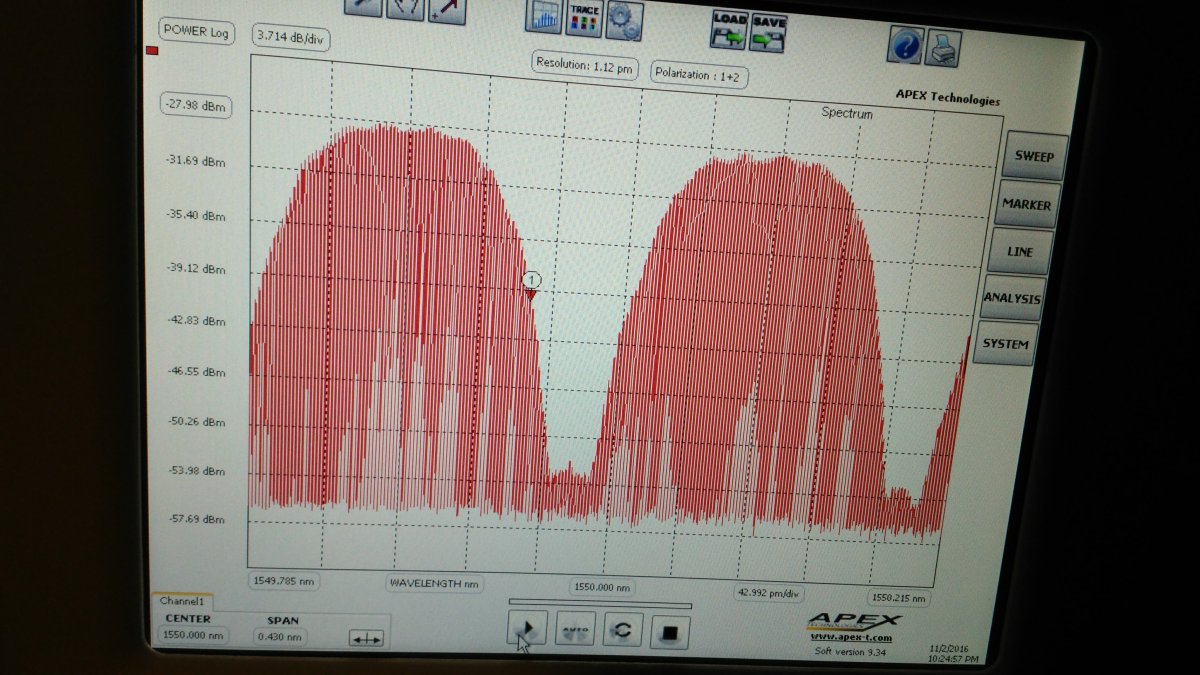Harry Potter’s invisibility cloak might not be so fantastical after all.

A team of researchers in Montreal claims to have successfully rendered an object invisible to broadband light, using a new technique dubbed, “spectral cloaking.”
Jose Azana, who co-authored a study on the findings, says the technique could have a wide range of security applications, including masking fibre-optic transmissions and making objects invisible to the naked eye.
“We have made a target object fully invisible to observation under realistic broadband illumination,” Azana said in a news release.
The experiment was conducted using fibre optic cable, laser light and a target object at the Institut National de la Recherche Scientifique (INRS) in Montreal.

Researchers shone the laser light through a cloaking device that changed the light’s frequency so it would pass through the target object, rather than interacting with it to make it visible. Another filter behind the object returned the light to its original frequency.
Azana said it was like turning the light into a “ghost” to pass through the object, then returning the light to normal.
“You make the object invisible.”
How it works
Most light sources in the world, including the sun, emit a broad range of visible light waves. This broadband light typically appears white, but shining it through a prism reveals that it’s actually made up of a range of individually-coloured waves.
Objects in everyday life are visible to the naked eye when they reflect and absorb a portion of this broadband light.
WATCH BELOW: Researchers create Harry Potter-inspired ‘invisibility cloak’
For example, a blue object reflects blue light waves and absorbs everything else. The object looks blue to the human eye because that’s the colour of light that’s bouncing off of it.
“What we try to do with the invisibility cloak is try to avoid that action,” Azana said.
Spectral cloaking effectively bumps light waves into a frequency that will pass through the target object, then returns those light waves to their original state.
In other words, you could shine a flashlight through a “cloaked” basket of blueberries and it would shine directly onto the wall on the other side, without reflecting any light from the blueberries in between. You’d just need to program the filter to cloak blue light.
“You could see behind the object as if there were no object,” Azana said.
That’s essentially what Azana and his team did, except they used a laser instead of a flashlight, and a very specifically-coloured target instead of a basket of blueberries.
Science fiction to science future
Invisible spy cars, camouflaged aliens, cloaked heli-carriers and hard-to-see Hobbits have been pop-culture mainstays for decades, but science has long struggled to replicate the same effect in real life.
Previous attempts at achieving invisibility have only succeeded in narrow ways, either by concealing an object (e.g. a stealth jet) from radar, distorting light waves to move around an object or rendering the object invisible under a single colour of light.
Azana says the latter form of cloaking is practically useless, because the real world is filled with different colours of light that would ruin the effect.
The spectral cloaking experiment didn’t hide anything as complicated as a jet or a human, but it did demonstrate that light can be shifted to completely pass through an object, rather than being reflected or absorbed.
That bodes well for potential military uses in the future, though those applications are still a long way off, the study authors say.
Azana says the cloak is dependent on knowing the exact colours need to be filtered out. However, one could theoretically program a cloaking device to ignore the full visible spectrum, effectively rendering an object invisible to the naked eye.
The study demonstrated that a one-dimensional object can be rendered invisible. The next step is to apply that same concept to two- and three-dimensional objects, Azana said.
“Our work represents a breakthrough in the quest for invisibility cloaking,” he said.
The findings were published in Optica, an open-access, peer-reviewed journal published by the Optical Society of America.
- What is a halal mortgage? How interest-free home financing works in Canada
- Capital gains changes are ‘really fair,’ Freeland says, as doctors cry foul
- Ontario doctors offer solutions to help address shortage of family physicians
- Canada will take bigger economic hit than U.S. if Trump wins election: report






Comments